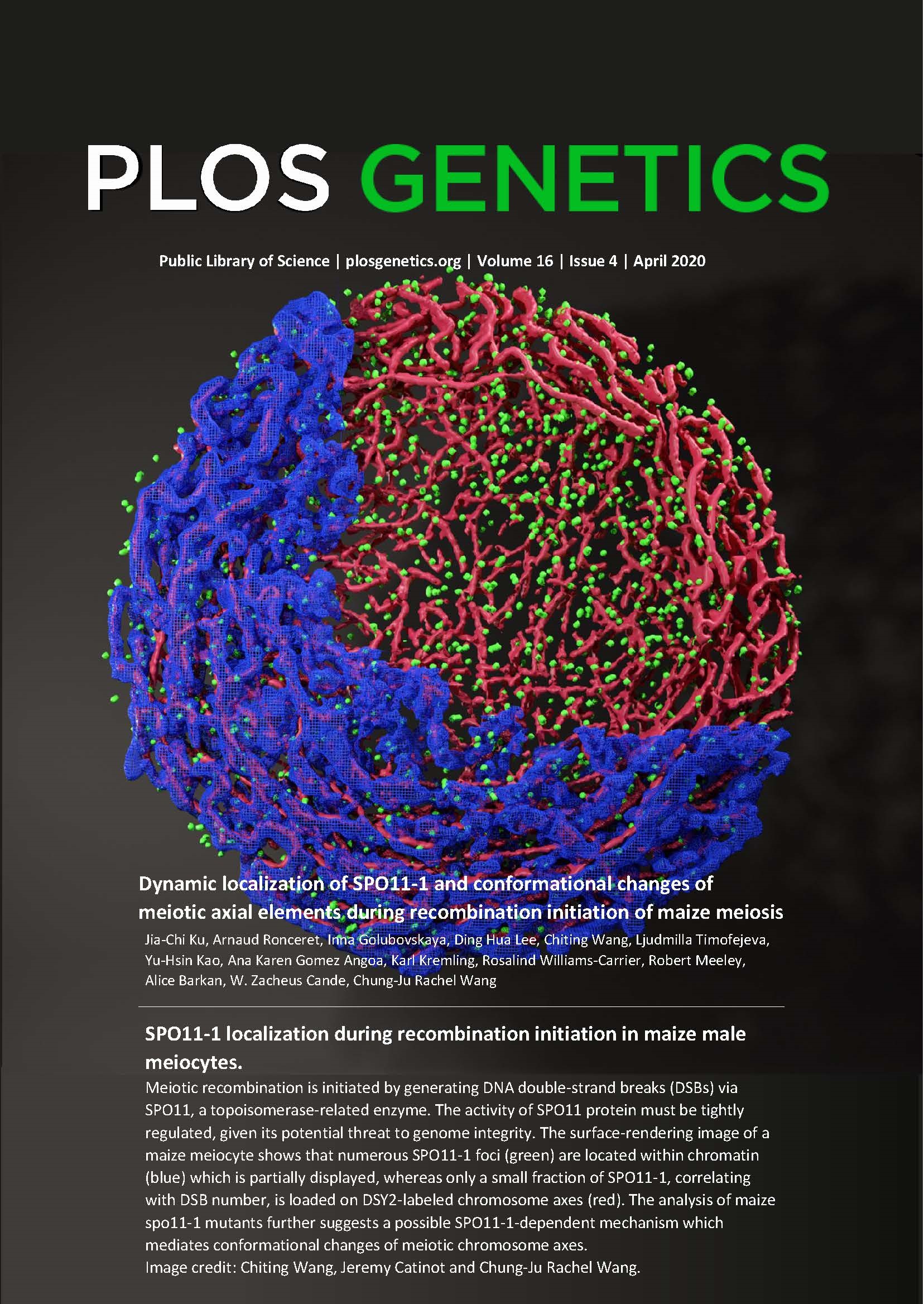[Chung-Ju Rachel Wang] Interplay between SPO11-1 and axial elements during DSB formation
POST:Meiotic recombination during meiosis is the most crucial step that is initiated by generating DNA double-strand breaks (DSBs) via SPO11, a topoisomerase-related enzyme. The activity, timing and location of this DSB machinery must be controlled precisely, but how this is achieved remains obscure. In this study, Rachel Wang’s group together with her international collaborators showed dynamic localization of thousands of SPO11-1 on chromatin during meiotic initiation in maize, yet a similar number of SPO11-1 corresponding to the number of DSBs is able to load onto axial elements (AEs), which accompanies a structural change of the AEs of wild-type meiotic chromosomes. Interestingly, loss of SPO11-1 not only affects DSB formation but also impairs structural alterations of AEs, resulting in abnormally long and curly AEs during early meiosis. This study provides new insights into SPO11-1 localization during recombination initiation and suggests an intimate relationship between DSB formation and AE structural changes. This work published in the journal PLoS Genetics (Ku et al., 2020) is contributed by first author Jia-Chi Ku, a former research assistant at Wang’s lab and two other international collaborators, Arnaud Ronceret and Inna Golubovskaya. The work was selected as the journal cover https://journals.plos.org/plosgenetics/issue.
